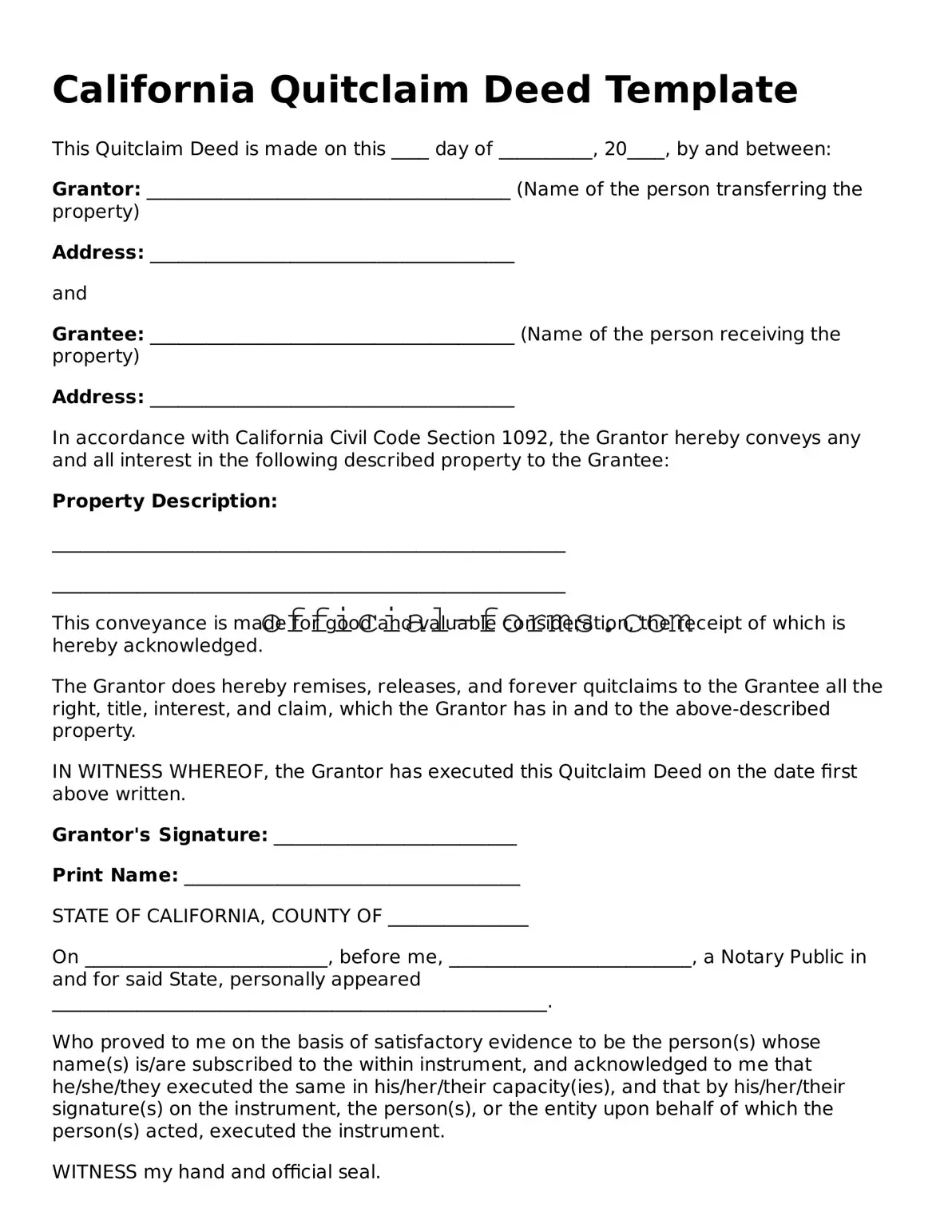Official California Quitclaim Deed Document
A California Quitclaim Deed is a legal document that allows a property owner to transfer their interest in a property to another party without making any guarantees about the title. This form is often used in situations such as transferring property between family members or clearing up title issues. Understanding how to use this deed effectively can simplify property transactions and help avoid disputes.
Open My Quitclaim Deed Now
